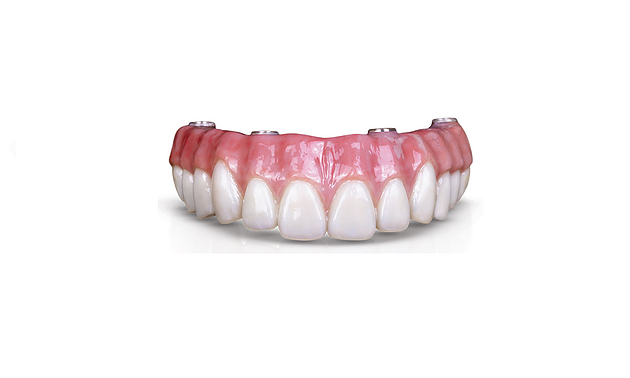Dental Sense for Beginners
Dental Sense for Beginners
Blog Article
Get This Report on Dental Sense
Table of ContentsDental Sense Things To Know Before You Get ThisSome Ideas on Dental Sense You Should KnowRumored Buzz on Dental SenseGetting My Dental Sense To Work
are clinical gadgets operatively dental implanted right into the jaw to recover a person's capability to chew or their appearance. They offer assistance for man-made (fake) teeth, such as crowns, bridges, or dentures. When a tooth is shed because of injury or illness, a person can experience problems such as quick bone loss, faulty speech, or changes to chewing patterns that lead to pain.Dental dental implant systems include an oral implant body and dental implant joint and may likewise consist of an abutment fixation screw. Dental implants. The oral implant body is surgically inserted in the jawbone instead of the tooth's origin. The dental implant joint is normally affixed to the implant body by the abutment fixation screw and expands with gum tissues right into the mouth to support the connected man-made teeth
(https://www.avitop.com/cs/members/dentalsense1.aspx)Structure of The Dental Implant System choosing dental implants, talk to your dental provider concerning the possible benefits and risks, and whether you are a prospect for the procedure. Points to take into consideration: Your general health and wellness is a crucial consider determining whether you are a great prospect for oral implants, the length of time it will take to recover, and for how long the dental implant might remain in area.
Smoking may impact the healing process and decrease the long-term success of the dental implant. The recovery process for the implant body may take several months or longer, during which time you commonly have a momentary abutment instead of the tooth. the oral implant procedure: Carefully adhere to the oral health instructions offered to you by your oral company.
The Definitive Guide for Dental Sense
Implant failure can cause the requirement for an additional procedure to repair or change the implant system. Brings back the capability to chew Brings back aesthetic look Helps keep the jawbone from shrinking due to bone loss Maintains the health and wellness of the surrounding bone and periodontals Aids maintain adjacent (nearby) teeth steady Enhances high quality of life Damages to bordering natural teeth throughout implant placement Injury to the surrounding cells throughout surgical procedure, such as sinus perforation Injury during surgical procedure (for example, crack of surrounding jawbone) Insufficient function, such as seeming like the teeth do not bite together generally A sensation that the tooth hangs or twisting in position resulting from a joint screw loosening up Implant body failure (looseness of the implant body) because of systemic infection, which might be most likely in individuals with unrestrained diabetes mellitus because of regional infection in bone and gum tissues supporting the dental implant body because of delayed recovery, which may be extra most likely in people that smoke Difficulty cleansing the gums around the implant, causing bad dental hygiene Neglected gum disease Post-surgical feeling numb as a result of nerve impingement or damage Constantly notify healthcare providers and imaging specialists that you have dental implants before any magnetic vibration imaging (MRI) or x-ray treatments.
FDA is not mindful of any kind of negative events reported for MRI or x-ray treatments with oral implants. Dental implants systems are commonly constructed from materials that follow worldwide agreement criteria of the International Company for Standardization (ISO) or ASTM International. These standards have details of what makes a secure product.

A dental implant is a framework that changes a missing out on tooth. With screw-like tools, the specialist inserts a dental implant into the jawbone, and it works as a support for an artificial tooth, called a crown. A device called an abutment connects the man-made tooth to the oral implant. The crown is personalized to fit the person's mouth and match the color of their teeth.
Getting The Dental Sense To Work
Some people are not eligible for dental implant surgical procedure. It is for oral surgeons to run on individuals with: intense illnessuncontrollable metabolic diseasebone or soft cells disease or infectionIf these problems are resolved, a person can have the surgery. In, oral specialists refrain from running on individuals with: If individuals with any one of the above undertake dental implant surgery, there is a higher threat of the implant falling short.

Oral dental implant surgical treatment is a customized process. It's not the very same for every person. The following provides a general review of what you can anticipate your dentist, dental doctor, periodontist or prosthodontist to do: Place the implant operatively. Offer you time to recover. Attach the post and last crown, bridge or denture.
Next off, your cosmetic surgeon will very carefully put the oral implant into your jaw. If your dental implant is near the front of your mouth, your dentist will certainly make a short-term tooth for you to put on until you heal.
7 Simple Techniques For Dental Sense
Your copyright can tell you what to expect in your scenario. During the recovery stage, your jawbone must fuse to the oral implant. This process, called osseointegration, is important for security and long-lasting success. This process can take anywhere from three to nine months. Sometimes, it might take much longer.
As soon as your dental implant heals, your dental practitioner can affix the abutment (small connector message) and your last reconstruction (crown, bridge or denture). This generally takes regarding one hour to complete and might need a second minor surgery. You shouldn't feel any discomfort throughout your oral implant procedure since your copyright will make use of drug to numb your periodontals.
Report this page